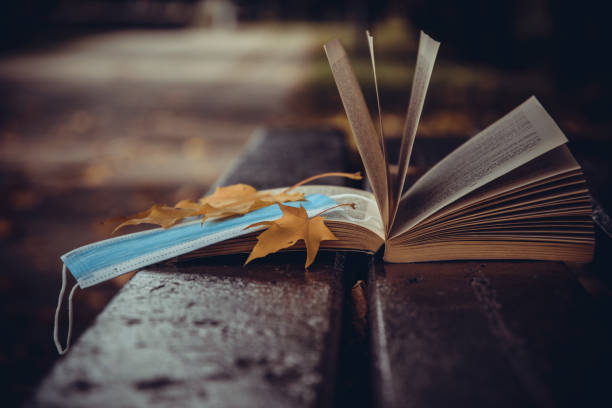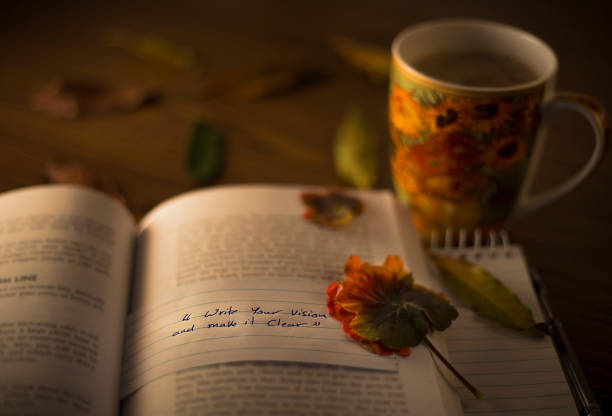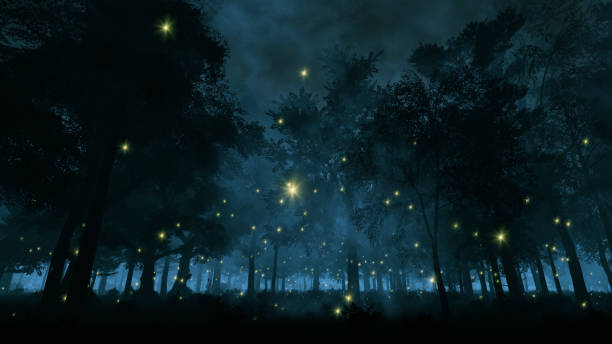How To Write A Sad Poem (14 Important Steps)
Writing a sad poem is like navigating the intricate terrain of the human heart, a delicate journey into the depths of emotion that evokes empathy and connection.
It’s an art form that allows us to explore the complexities of sadness, to give voice to our own sorrows, and to touch the hearts of others with the universality of human pain.
In this guide, we will embark on a poetic odyssey through the melancholic landscapes of sorrow, unraveling the intricacies of crafting verses that resonate with authenticity and depth.
From finding inspiration in personal experiences to the art of crafting emotive imagery and choosing the right themes, we will delve into the subtle nuances that make sad poetry an emotional masterpiece.
So, whether you’re an aspiring poet or a seasoned wordsmith, let’s embark on this journey to explore the profound and transformative world of writing a sad poem.
How To Write A Sad Poem
To write a sad poem, follow these step-by-step instructions:
Choose your theme
Select a specific sad or melancholic theme or emotion that you want to convey in your poem. This could be heartbreak, loss, loneliness, or any other source of sadness.
Brainstorm ideas
Take some time to brainstorm and jot down your thoughts and feelings related to the chosen theme. Consider personal experiences or observations that can add depth to your poem.
Create a mood
Establish the mood and tone for your poem. Use descriptive words and imagery to evoke a sense of sadness and melancholy. Think about the setting, weather, and other elements that can contribute to the atmosphere.
Structure your poem
Decide on a poetic form or structure for your poem. Common choices include free verse, sonnets, or haikus. The structure can help guide the flow of your words and emotions.
Start with a powerful opening
Begin your poem with a compelling and emotionally charged opening line or stanza that immediately draws the reader into the world of sadness.
Use figurative language
Employ metaphors, similes, and other literary devices to enhance the emotional impact of your poem. Compare sad feelings to concrete, relatable images to make them more vivid.
Show, don’t tell
Rather than explicitly stating your emotions, show them through vivid descriptions and evocative language. Let the reader feel the sadness through your words.
Use sensory details
Appeal to the reader’s senses by incorporating vivid sensory descriptions. Explore how sadness affects sight, sound, touch, taste, and smell.
Structure and rhythm
Pay attention to the rhythm and flow of your poem. Use line breaks, punctuation, and pacing to control the reader’s experience and emphasize key moments.
Conclusion
Conclude your poem with a powerful and thought-provoking ending that leaves a lasting impression on the reader. Reflect on the theme and emotions you’ve explored throughout the poem.
Revise and edit
After writing your initial draft, take the time to revise and edit your poem. Check for spelling, grammar, and clarity. Ensure that every word contributes to the overall impact of your sad poem.
Seek feedback
Share your poem with trusted friends, fellow writers, or writing groups to get constructive feedback. This can help you refine your poem and make it even more emotionally resonant.
Final touches
Make any final adjustments to your sad poem based on the feedback you receive. Polish it until you’re satisfied with the result.
Share your work
Consider sharing your sad poem with a wider audience through personal blogs, social media, or literary publications to connect with others who may relate to your emotions.
Remember that writing a sad poem is a personal and creative process, and there are no strict rules. Let your emotions and imagination guide you as you express your sadness through the art of poetry.

Finding Inspiration
In the tapestry of life, inspiration is the luminous thread that weaves moments of brilliance into the mundane canvas of existence.
It’s the ember that ignites the creative furnace within, making our souls glow with the fire of innovation. Inspiration, like a mystical whisper from the universe, can be found in the most unexpected corners of our daily routines or the grandeur of nature’s spectacle.
Whether it’s the ethereal dance of a falling leaf, the haunting melody of a forgotten song, or the profound stories of resilient souls, it has the power to transform the ordinary into the extraordinary.
So, don your adventurer’s hat and embark on a quest to unearth the treasures of inspiration, for in its enchanting embrace, you’ll discover a world where the extraordinary becomes the norm.
Personal Experience
Personal experiences are the heartbeats of our individual journeys, the stories that define us and etch our unique narratives into the tapestry of existence.
They encompass the rich spectrum of emotions, from the joy of triumph to the depths of sorrow, and every shade in between.
These experiences shape our perspectives, values, and character, providing invaluable lessons and insights along the way.
From the exhilarating moments of self-discovery to the challenges that test our resilience, personal experiences are the compass guiding us through the labyrinth of life.
They grant us the privilege of understanding the world not only through the lens of others but through the lens of our own hearts, offering us a profound connection to the human condition and the stories that make us who we are.
Observing the World
Observing the world is like embarking on a never-ending expedition into the realms of wonder and understanding.
It’s a conscious act of opening our senses to the captivating symphony of life that unfolds around us every day. When we pause to observe, we become keen witnesses to the beauty of nature’s secrets, the intricacies of human interaction, and the myriad patterns that shape our universe.
Whether it’s the delicate petals of a blooming flower, the intricate dance of city lights at dusk, or the profound expressions on people’s faces, this act of observation fuels our curiosity, deepens our empathy, and enriches our perception of reality.
It’s a reminder that the world is an inexhaustible source of inspiration and knowledge, and by observing it with intent and reverence, we can unlock the mysteries that make our existence endlessly fascinating.
Choosing the Right Theme
In the realm of creative expression, choosing the right theme is akin to selecting the compass that guides your artistic voyage. It’s your ticket to embarking on a captivating journey through the landscapes of human emotion and experience.
Like an alchemist, you have the power to transmute the mundane into the extraordinary by picking the perfect theme, one that resonates with the very core of your soul.
Whether you delve into the depths of heart-wrenching sorrow, explore the ethereal realms of love, or navigate the uncharted waters of existential contemplation, the theme you choose is the key to unlocking the treasure troves of your imagination.
It’s the difference between creating art that merely exists and crafting a masterpiece that transcends time and touches the hearts of those who encounter it.
So, choose your theme with the wisdom of a sage and the passion of a true artist, for in this choice, you hold the power to paint the world with your unique vision.

Loss and Grief
Loss and grief are the profound, inescapable currents of human existence, for in the ebb and flow of life, we all encounter moments that shatter our hearts and test our resilience.
They are the emotions that speak to the fragility of our mortality, the universal language of human suffering. When we lose someone we cherish or something we hold dear, grief becomes the companion to our solitude.
It’s a voyage through the labyrinth of sorrow, a journey that knows no shortcuts and demands to be felt in its entirety. In the depths of grief, we confront the rawest, most vulnerable aspects of our humanity. Yet, within this darkness lies the potential for growth and healing.
It’s a testament to the enduring love and significance of what or who we’ve lost, a testament to the undying connection between souls, and it teaches us the value of cherishing the moments we have while they last.
Loneliness and Isolation
Loneliness and isolation, the silent companions of the human experience, can be both a desolate wasteland and a fertile ground for self-discovery.
In the quiet depths of solitude, we confront the innermost chambers of our hearts and minds, sometimes feeling as though we are adrift in a vast, empty sea.
It’s a complex emotional landscape where the absence of external connections can paradoxically lead to a profound connection with oneself. Loneliness is a canvas upon which we paint the murals of introspection, forging an intimate bond with our inner world.
Yet, it’s also a poignant reminder of our inherent need for human connection, making the moments of genuine connection all the more precious.
In the throes of isolation, we learn to befriend the solitude, harness its creative potential, and, ultimately, appreciate the beauty of our shared human experience.
Regret and Remorse
Regret and remorse, the weighty burdens of our past actions and choices, can be the bitterest fruits of self-reflection.
They are the echoes of our own humanity, the haunting reverberations of decisions made in haste or without foresight. Regret is the pang of longing for the road not taken, a wistful yearning for a different outcome.
Remorse, on the other hand, delves deeper, acknowledging the pain we may have caused others through our actions.
These emotions are our moral compass, urging us to learn from our mistakes and cultivate empathy. They serve as a testament to our capacity for growth and change, encouraging us to make amends, and ultimately, to forge a more compassionate and wise path forward.
While regret and remorse may be painful, they are the crucibles in which our character is forged, and they remind us that the journey of self-discovery is an ongoing, transformative process.
Crafting Emotive Imagery
Crafting emotive imagery is akin to conjuring a symphony of sensations that dance in the reader’s mind, a kaleidoscope of emotions painted with words.
It’s the art of being both a sculptor and a magician, molding language to shape vivid mental landscapes and weaving enchanting tapestries of feeling.
Through metaphors, similes, and symbolism, you become an architect of the heart’s architecture, creating spaces that resonate with the echoes of your prose.
With sensory language, you sprinkle stardust upon the reader’s senses, allowing them to touch, taste, smell, and hear the emotions you wish to convey.
In this literary alchemy, you transform words into a palette of emotions, and with each stroke of the brush, you unveil a world where the reader is not just an observer but a participant in the grand theater of your creation.
Crafting emotive imagery is the magical key that opens the door to a realm where words transcend mere letters and become a portal to the soul.

Structure and Form
Structure and form are the architectural blueprints of a literary masterpiece, the invisible scaffolding that supports the weight of words and gives them wings to soar.
It’s the poetic geometry that ensures a symphony of syllables flows with harmonious grace or jolts with disruptive force. Like a sculptor carving life from stone, the choices in line length and stanza structure are the chisel and mallet, shaping the rhythm and pacing of the narrative.
Meter and rhyme, like musical notes, dictate the cadence of the written symphony, their patterns orchestrating a symphony of emotions within the reader’s soul.
With the right structure and form, a poem transforms from mere words into a work of art, one that resonates deeply with the audience, and leaves an indelible imprint on the heart and mind.
It is in the exquisite dance of structure and form that the soul of a poem is set free, to captivate and inspire with its unique, timeless beauty.
Meter and Rhyme
Meter and rhyme are the rhythmic heartbeat of poetry, the cadence and melody that breathe life into words. Meter, like the steady pulse of a drum, sets the tempo of a poem, creating a natural ebb and flow that guides the reader through its verses.
Rhyme, on the other hand, is the delicate thread that weaves a tapestry of connection between lines and stanzas, enhancing the musicality and unity of the poem.
Together, they form a harmonious duet, guiding the reader’s ear through a poetic journey with a sense of balance and predictability or adding an element of surprise and contrast.
Whether it’s the soothing lullaby of a nursery rhyme or the tumultuous waves of Shakespearean sonnets, meter and rhyme can transform a mere collection of words into a symphony of emotions, making poetry an art form that speaks directly to the soul and leaves an indelible mark on the heart.
Line Length and Stanza Structure
Line length and stanza structure in poetry are the silent architects of a visual and auditory experience, like the framework of a building that defines its character and design.
Line length determines the pace and breath of a poem, with short lines quickening the reader’s step, and long lines inviting leisurely contemplation. Stanza structure, on the other hand, acts as the blueprint for the arrangement of these lines, shaping the poem’s rhythm and structure.
A well-crafted stanza can create a sense of symmetry and order or invoke chaos and disruption, depending on the desired effect.
Whether you’re building a sonnet with its strict quatorzain structure or crafting a free verse poem with organic, sprawling stanzas, these choices become the visual and structural backdrop against which the words unfold, accentuating the thematic depth and emotional resonance of the poem.
In this artful interplay of line and stanza, the poet engineers the reader’s journey, transforming words into a finely tuned instrument that resonates with the soul.
Setting the Tone
Setting the tone in writing is like orchestrating a symphony of emotions, a conductor’s wand weaving through the air, casting a spell that lingers in the hearts of readers.
It’s the alchemy that transforms words into a melodious resonance or a tempestuous crescendo, like a painter choosing the colors that evoke the deepest feelings.
Through carefully chosen words and emotional progression, you become a sorcerer, guiding readers on an emotional odyssey.
Whether it’s the delicate brushstrokes of a soft-spoken lullaby or the thunderous clash of a turbulent storm, setting the tone is the key that unlocks the door to a world where words cease to be mere text and instead transmute into a living, breathing, and enchanting experience.
It’s the invitation to an unforgettable journey, an incantation that beckons the reader to immerse themselves in the realm you’ve created, leaving them forever changed by the magic of your words.
Word Choice
Word choice is the poet’s palette, the sculptor’s chisel, and the composer’s notes—all rolled into one. It’s the careful curation of language to paint vivid, indelible images in the reader’s mind and to evoke a kaleidoscope of emotions.
Each word is a brushstroke on the canvas of the reader’s imagination, a building block in the architecture of a narrative. The right word can be a gentle caress or a thunderous clap, a whispered secret or a triumphant proclamation.
It is in the meticulous selection of words that a writer becomes an artist, wielding the power to craft stories that linger in the reader’s memory long after the book is closed.
Every word carries its own resonance, and in their collective symphony, they transform a mere composition into a masterpiece, inviting the reader into a world where language is a gateway to the extraordinary.
Emotional Progression
Emotional progression is the lifeblood of storytelling, the heart that beats in every well-crafted narrative. It’s the path that characters traverse, the crescendo of feelings that readers experience, and the essence of transformation.
Like the tides of the ocean, it flows and swells, carrying the audience through a spectrum of emotions, from the initial flicker of curiosity to the roaring storm of climax and the gentle ebb of resolution.
It’s the steady beat of human experience, providing depth and resonance to the tale being told.
As writers, we are the architects of this emotional journey, shaping the narrative terrain and guiding readers through the labyrinth of feelings, reminding them that stories are not just ink on paper but a profound exploration of the heart’s boundless capacity for empathy, connection, and understanding.
The Role of Music
The role of music in our lives is like the unseen conductor of our emotions, orchestrating our feelings in a symphony that transcends words.
It’s the language of the soul, a universal poetry that resonates with every heartbeat and every tear. Music has the remarkable ability to conjure memories, evoke nostalgia, and unleash the full spectrum of human emotions.
Whether it’s the haunting melody of a haunting piano piece or the infectious rhythm of a toe-tapping jazz tune, music transforms the mundane into the extraordinary.
It’s the soundtrack of our lives, an unspoken companion that whispers to our hearts and propels us through our most jubilant celebrations and somber contemplations.
The power of music is a reminder that the world is not merely a visual experience but a vibrant, harmonious tapestry of sounds, and in its intoxicating spell, we find solace, inspiration, and the purest expressions of our humanity.
Editing and Revision
Editing and revision are the unsung heroes of the creative process, the alchemical workshops where raw ideas are forged into polished masterpieces.
They’re the artisans’ chisels and brushes, refining the rough edges and adding layers of brilliance to a work of art. Like a sculptor’s hands, they mold the narrative, cutting away the excess to reveal the true essence beneath.
In the editing crucible, writers become their harshest critics, challenging every word and punctuation mark to justify its presence.
Through the process of revision, a story evolves, sharpening its focus, deepening its characters, and refining its language until it gleams with the luminosity of a finely cut diamond.
It’s a journey of transformation, where each draft breathes new life into the narrative, and it’s a testament to the writer’s dedication to their craft, proving that writing is not just about inspiration but the unyielding pursuit of perfection.
Publishing and Sharing
Publishing and sharing your creative work is akin to sending a message in a bottle out into the vast ocean of human connection.
It’s an act of vulnerability, a leap of faith that your words will resonate with another soul somewhere in the world. In the digital age, we have an unprecedented opportunity to cast our stories and ideas like seeds to the wind, hoping they find fertile ground in the hearts and minds of our readers.
Whether you’re sending your words off to a literary journal, posting them on a blog, or sharing your tales on social media, it’s an act of courage that transcends time and space, making you part of a grand tradition of storytellers.
Every published piece is a gift, an offering to the world, an invitation to others to join you in exploring the wonders of imagination, knowledge, and human experience.
In the act of publishing and sharing, you become a part of a global tapestry, weaving together the dreams and ideas that connect us all.
Frequently Asked Questions (FAQ) about How To Write A Sad Poem
What makes a poem “sad”?
A sad poem is one that elicits feelings of melancholy, grief, or sorrow. It typically revolves around themes like loss, loneliness, and regret, using evocative language and imagery to convey these emotions.
How do I find inspiration for a sad poem?
Inspiration can be drawn from personal experiences, observing the world around you, or even through empathizing with others’ stories. Sad poems often have their roots in genuine emotions and deep reflection.
What are the key elements of crafting emotive imagery in a sad poem?
To create emotive imagery, use metaphors, similes, symbolism, and sensory language to evoke powerful emotions and vivid mental pictures in the reader’s mind.
How can I structure a sad poem effectively?
Structure can vary, but consider elements like meter and rhyme to control the poem’s rhythm. Line length and stanza structure should be chosen to enhance the emotional impact and pacing of the poem.
What role does tone play in writing a sad poem?
Setting the right tone is crucial. Word choice and emotional progression should be carefully considered to maintain a consistent mood throughout the poem, from the beginning to the end.
How do I make my sad poem sound musical and engaging?
Incorporate sound devices like alliteration, assonance, consonance, and onomatopoeia. Read your poem aloud to ensure it has a musical and rhythmic quality that captivates the reader.
What’s the importance of editing and revising a sad poem?
Editing and revision are essential to refine your poem, eliminate redundancy, and strengthen imagery. They help ensure that your poem conveys the intended emotions effectively.
Where can I publish and share my sad poems to reach a wider audience?
You can submit your work to literary journals and magazines or share them on digital platforms, social media, and poetry communities to connect with a broader readership.
Can sad poetry be a form of therapeutic expression?
Absolutely, writing sad poetry can be a therapeutic outlet for processing and healing from personal experiences. It allows you to give voice to your emotions and find solace in the act of creation.
How can I ensure my sad poem resonates with readers on a deep level?
To create a poem that deeply touches readers, be genuine and authentic in your expression. Craft a narrative that others can relate to and find solace or connection in your words.
Conclusion
In the realm of poetry, the art of crafting a sad poem is a profound journey through the intricate labyrinths of human emotions. It’s a testament to the power of words to touch the depths of our souls, to bridge the gaps of loneliness, and to convey the universal experiences of sorrow and melancholy.
From finding inspiration in personal stories to mastering the nuances of tone and imagery, the creation of a sad poem is a transformative process that weaves together the threads of empathy and catharsis.
As we conclude this exploration, remember that each sad poem is an opportunity to connect with the hearts of others, to heal and be healed, and to discover the beauty that often lies in the depths of our shared vulnerability.
So, whether you’re a budding poet or an experienced writer, embrace the magic of sad poetry as you embark on your own creative journey, and let your words become the solace, understanding, and solace for others who, like you, traverse the intricate landscapes of human emotion.






